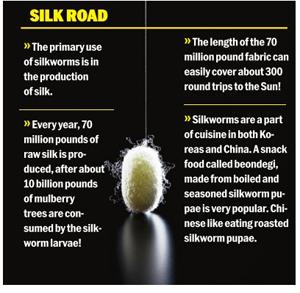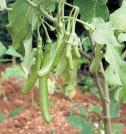In place of paddy and vegetables, this farmer in the interiors of Varthur is cultivating four acres of different varieties of grass to meet the city’s growing demand for lawn turf

If you enjoy a hot cuppa every morning in the balcony overlooking a green patch of grass below, you should be counting yourself as lucky. Plus, you would have probably paid extra for that view given the escalating real estate prices. Not surprisingly, a big chunk of demand for lawns comes from apartment buildings and office complexes. And while some of us might assume that nurseries on Outer Ring Road, Marathahalli and Whitefield will be stocking acres of lawn turfs, the reality is different. Most of these nurseries source lawn turf from elsewhere. After a bit of digging, we found the place of origin a few kilometres into Varthur.
As one negotiates the narrow, bustling Varthur Road, crowded with local market goers, the landmark to look out for is the Police Station. Past the station is a blink-and-you-will-miss-it road on the right. The Balagere Road widens up and runs past government schools, small shops and temples. At one such roadside temple is a dirt road. If you haven’t got lost yet, this is the place to turn right and brace for a short, bumpy ride. On the left and right are fields growing vegetables and grains. The vast acres are dotted with coconut trees.
Hardly 200 metres down the road is the home of Krishna Reddy (85). He is the owner of 12 acres of land that has been in the family for more than 100 years. His four sons are not prepared to be farmers. They have jobs in Bengaluru, a city which is fast approaching their fields. The robust and friendly Reddy shows off his land dotted with coconut trees. But more than the land, he speaks of the new home that his sons are building nearby which is bigger and better than his current modest dwelling. There is no one to take care of the land, he says, but he will live off it and not depend on anyone till he dies. Mid-reverie, Reddy shakes off his thoughts and looks around for Muniraj in the distance.
He is the man Reddy has rented out his fields to. Where there were once vegetables are patches of green grass which can easily be mistaken for paddy by the untrained urban eye. We have finally reached the place where the lawns are grown.
The four acres of land is a veritable supermarket for lawns. “Thirty thousand for a year’s lease,” Muniraj says as he shows us around the patches of grass growing randomly in different areas.
Bermuda, Mexican, Shade, Pondicherry, Elephant, Buffalo… Muniraj rattles off, sounding like a Darshini waiter. These are the varieties available at his ‘lawn store’. We walk to a patch of Bermuda grass that is being tended by his wife Manjula. He informs us that there are 25 people who work for him but have now gone to their native place, Bellary, for a festival. “Bellary has no water or jobs,” he adds.
However, water for his grass fields is aplenty. The Varthur Kere (lake) is their saviour. Relying on its acid waters, Muniraj has only kind words for the much-polluted lake. Yes, the water is acidic. Yes, it froths vile white foam. But without its water, “we might as well shut shop”, he goes on to say.
His shop has been running for 20 years now. There are few more like him, but not many, he adds. Lawn grass from here has travelled to Chennai and Coimbatore too.
A sack of Bermuda grass sells at Rs 200, while a sack of Shade grass is marked at Rs 300 (it would approximately cover a 10×10 feet lawn). Mexican grass is dearer at Rs 15 per square feet. In a day, he needs to make at least Rs 20,000 to keep even. With a weekly expenditure of Rs 25,000 in terms of salary, manure and pesticides, Muniraj relies on the year-long demand.
Walking around, we see an empty field with just a square metre of Bermuda grass. That field is almost sold, Muniraj says, and he is waiting to plant the land once again after the remaining patch is gone. Bermuda grass, the most popular of the lot, is a four-times-a-year crop. Mexican grass has twice-a-year harvest. What he has to check is that the grass blades are sharp and uniform. “Bermuda grass is the best,” he says. He should also ensure that the grass does not flower before being sold. “Look at this,” he points to Pondicherry grass with delicate white flowers. “People don’t want flowers in the lawn.”
But people do want lawns. It is hard to make profits every month. In business, there is never saying what happens, Muniraj offers as a way of explanation. He looks at the distant buildings, many of them apartment complexes. That is where his fortunes are. He banks on the pleasure its residents have in looking at a green patch of grass while drinking their morning cuppa.
Green trivia Sun loving grasses like Bermuda and Mexican grass are available as mats making them popular with urban gardeners. While Mexican tends to clump if neglected, Bemuda, although slower to grow, is easy to maintain. Shade grass, Elephant and Buffalo grass need dappled sunshine for at least two-three hours. With wider, almost nati-looking (local) blades, these varieties of grasses are not popular in ‘posh’ areas.
source: http://www.bangaloremirror.com / Bangalore Mirror / Home> Columns> Sunday Read / by Jayanthi Madhukar, Bangalore Mirror Bureau / November 15th, 2014










